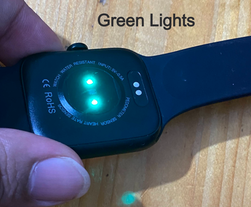What is Wi-Fi 6 | Tech-Knowledge
- Subir Biswas

- Jun 20, 2021
- 4 min read
What is Wi-Fi 6
Wi-Fi 6, a new era for Wi-Fi standard. This technology is based on the IEEE 802.11ax standard which improved the current standard "802.11ac". This new technology provides the capacity, efficiency, coverage, and performance required by users today in the most demanding Wi-Fi environments. Emphasizing quality connectivity in locations with hundreds or thousands of connected devices such as stadiums and other public venues, as well as corporate networks utilizing time-sensitive, high bandwidth applications, Wi-Fi 6 networks ensure each connected device performs at an optimum level. Wi-Fi 6 devices meet the highest standards for security and interoperability, and enable lower battery consumption, making it a solid choice for any environment, including the Internet of Things (IoT).
Key capabilities and benefits of Wi-Fi 6
Wi-Fi 6 devices operate in the 2.4 and 5 GHz bands and deliver greater capacity than the prior generation of Wi-Fi. Wi-Fi 6 devices bring reliable performance indoors, outdoors, and in dense environments. Devices also demonstrate longer battery life. Key features enabling the benefits of Wi-Fi 6 include:
Orthogonal frequency division multiple access (OFDMA):
OFDMA is a multi-user version of the OFDM digital-modulation technology. This split transmitted data into several small packets, to move small bits of information in a simple way. Furthermore, OFDMA subdivides a channel into smaller frequency allocations called subcarriers. By subdividing the channel, small packets can be parallel transmitted to multiple devices simultaneously. Arrived packets proceed to transmit and don’t have to wait for other packets. In downlink OFDMA, the router can use different sub-carrier groups to send packets to different clients and latency can be managed. This flexible and decentralized method of communication increases network speed and efficiency.
See the video link below from ASUS described the OFDMA very efficiently.
Multi-user multiple input, multiple output (MU-MIMO):
The more devices that connect to your home WiFi, the slower it moves. That's because most routers can only communicate with one device at a time which is called a single-user (SU-MIMO). Multi-user, multiple-input, multiple-output technology better known as MU-MIMO allows a Wi-Fi router to communicate with multiple devices simultaneously. This decreases the time each device has to wait for a signal and dramatically speeds up your network. Considering that the average household has upwards of eight devices battling for bandwidth simultaneously, MU-MIMO will increasingly improve your WiFi experience. It allows more downlink data to be transferred at once and enables an access point to handle a larger number of concurrent clients.
160 MHz channel utilization capability:
With 160 MHz channels, users get the fastest Wi-Fi, delivering multi-gigabit low latency connections. These high throughput connections are essential to supporting 5G services indoors where mmWave signals can't reach. Multi-gigabit Wi-Fi essentially acts as an indoor hotspot, seamlessly supporting 5G services in dense indoor environments.
Target wake time (TWT):
This feature enables scheduled sleep and wake times for better network efficiency and longer device battery life. TWT is a concept developed in 802.11ah. It allows devices to wake up at other periods than the beacon transmission period. Furthermore, the APs (access points) may group devices to different TWT periods thereby reducing the number of devices contending simultaneously for the wireless medium. Overall, this feature enables scheduled sleep and wake times for better network efficiency and longer device battery life.
1024 quadrature amplitude modulation mode (1024-QAM):
Quadrature amplitude modulation (QAM) is a highly developed modulation scheme used in the communication industry in which data is transmitted over radio frequencies. For wireless communications, QAM is a signal in which two carriers (two sinusoidal waves) shifted in phase by 90 degrees (a quarter out of phase) are modulated and the resultant output consists of both amplitude and phase variations. These variations form the basis for the transmitted binary bits, atoms of the digital world, that results in the information we see on our devices. By varying these sinusoidal waves through phase and amplitude, radio engineers can construct signals that transmit an ever-higher number of bits per hertz (information per signal). Systems designed to maximize spectral efficiency care a great deal about bits/hertz efficiency and thus are always employing techniques to construct ever denser QAM constellations to increase data rates. Put simply, higher QAM levels increase throughput capabilities in wireless devices.
In real-world terms, 1024-QAM enables a 25% data rate increase (throughput) in Wi-Fi 6 (802.11ax) access points and devices.
Transmit beamforming:
Beamforming is a technique that focuses a wireless signal towards a specific receiving device, rather than having the signal spread in all directions from a broadcast antenna, as it normally would. The resulting more direct connection is faster and more reliable than it would be without beamforming.
This feature improves signal power resulting in significantly higher rates at a given range.
Wi-Fi 6 technology features compared to its predecessor.
Wi-Fi 6 provides the foundation for a host of current and emerging uses from streaming ultra-high-definition movies, to mission-critical business applications requiring high bandwidth and low latency, to stay connected and productive while traversing large, congested networks in airports and train stations.
The mobile phone supports Wi-Fi 6:
Listed few mobile phones available in the market with Wi-Fi 6 technology.
Galaxy Fold and Galaxy S10 & S21, Note 10 & Note 20 series.
iPhone 11 series and above
Huawei Mate Xs, Huawei P40
Honor 30 Pro,
Oppo Reno3 5G, Oppo Find X2,
Xiaomi Mi 10, Mi 11
Realme X50 Pro 5G,
OnePlus 8,
Sony Xperia 1 II,
LG V60 ThinQ 5G
Data sources:




























Comments